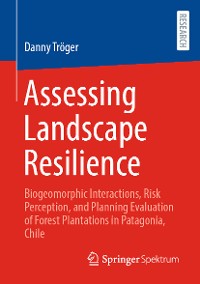Assessing Landscape Resilience
Danny Tröger
Naturwissenschaften, Medizin, Informatik, Technik / Sonstiges
Beschreibung
This book examines the extent to which exotic pine plantations are a suitable strategy for maintaining the essential functions, structures, processes and identity of the Patagonian landscape over time. To this end, it integrates three empirical studies with inter- and transdisciplinary approaches under the theoretical framework of landscape resilience.
The first study analyses the biogeomorphic interactions of different land uses and their relevance for soil conservation and landslide mitigation. The second study examines perceptions of natural hazards and focuses on networks of human and non-human actors that maintain landscape resilience. The results of these two studies are incorporated into the planning evaluation of land zoning and alternative strategies are developed, inspired by normative polycentric governance.
It is concluded that Pinus plantations partially fulfil their ecological objectives of erosion control and landslide mitigation. However, their performance lags behind that of secondary forests with native species and they create new risks such as reduced biodiversity, increased risk of wildfires and conflicts with local identity. The book concludes with new research questions of trans-regional importance.
Kundenbewertungen
Actor-network theory, Vulnerability studies, Nothofagus pumilio, cological landslide mitigation, Forest plantation, Normative Polycentric Governance, Land zoning, Patagonia, Water erosion, Hillslope stability, Pinus ponderosa, Land use, Risk perception, Agroforestry, Landscape Resilience, Nature-culture distinction, Planning evaluation, Biogeomorphic interactions, Disaster Resilience

























